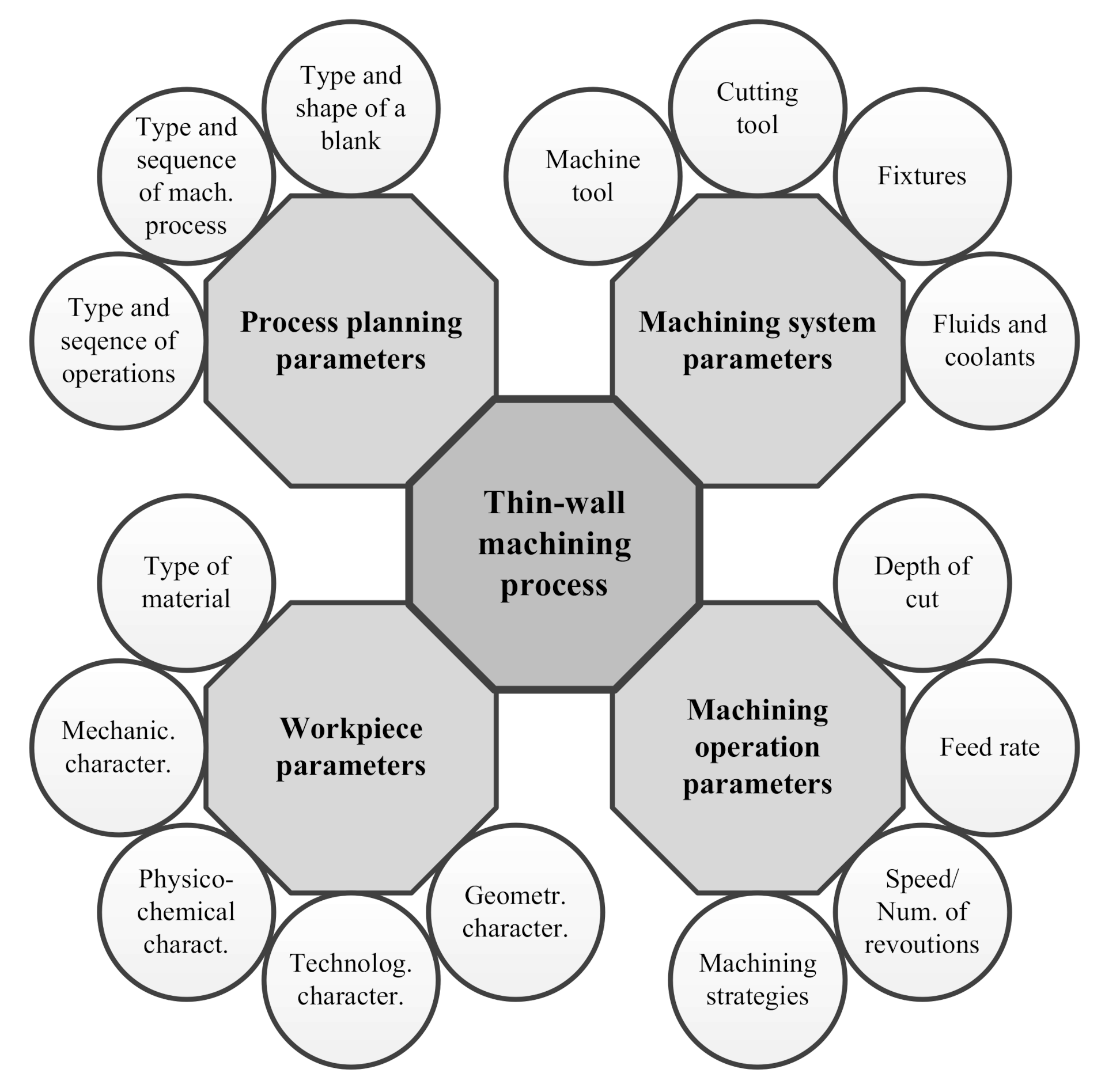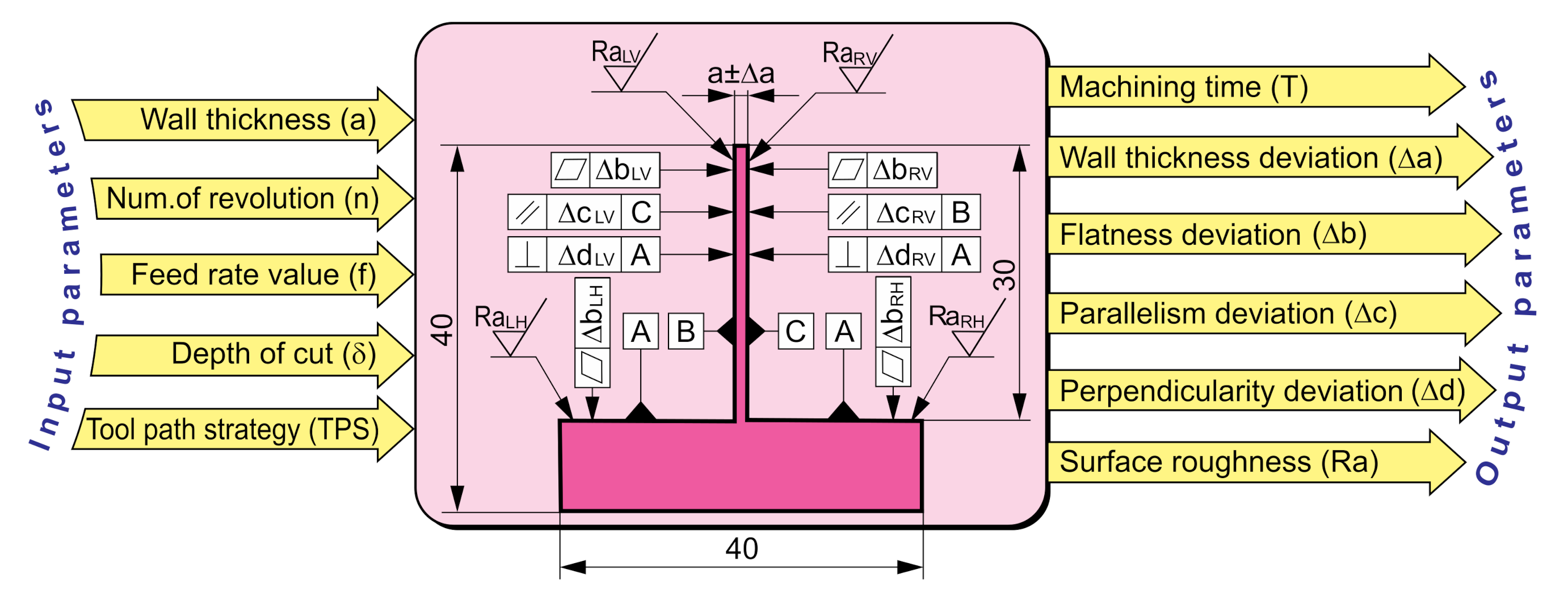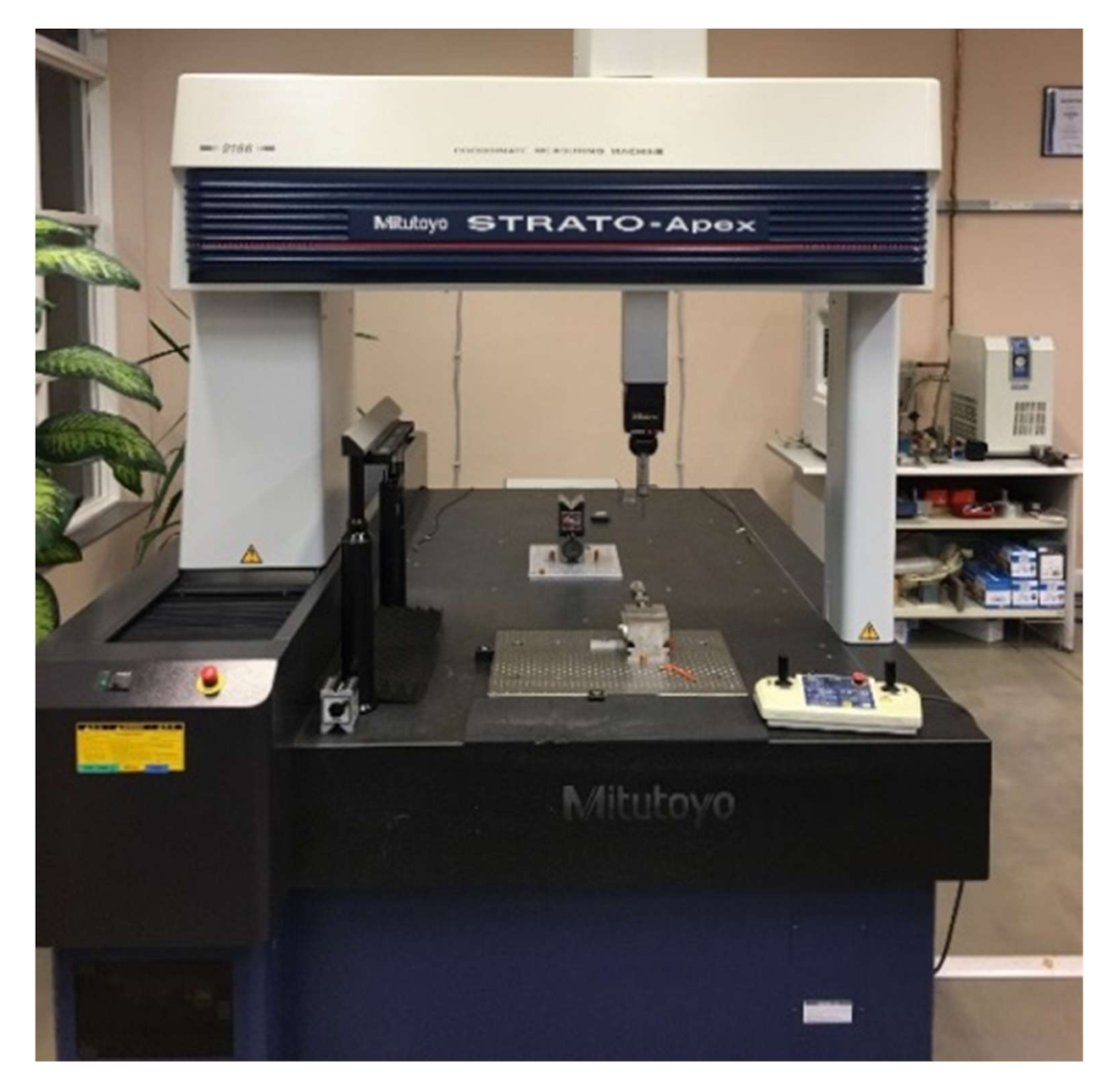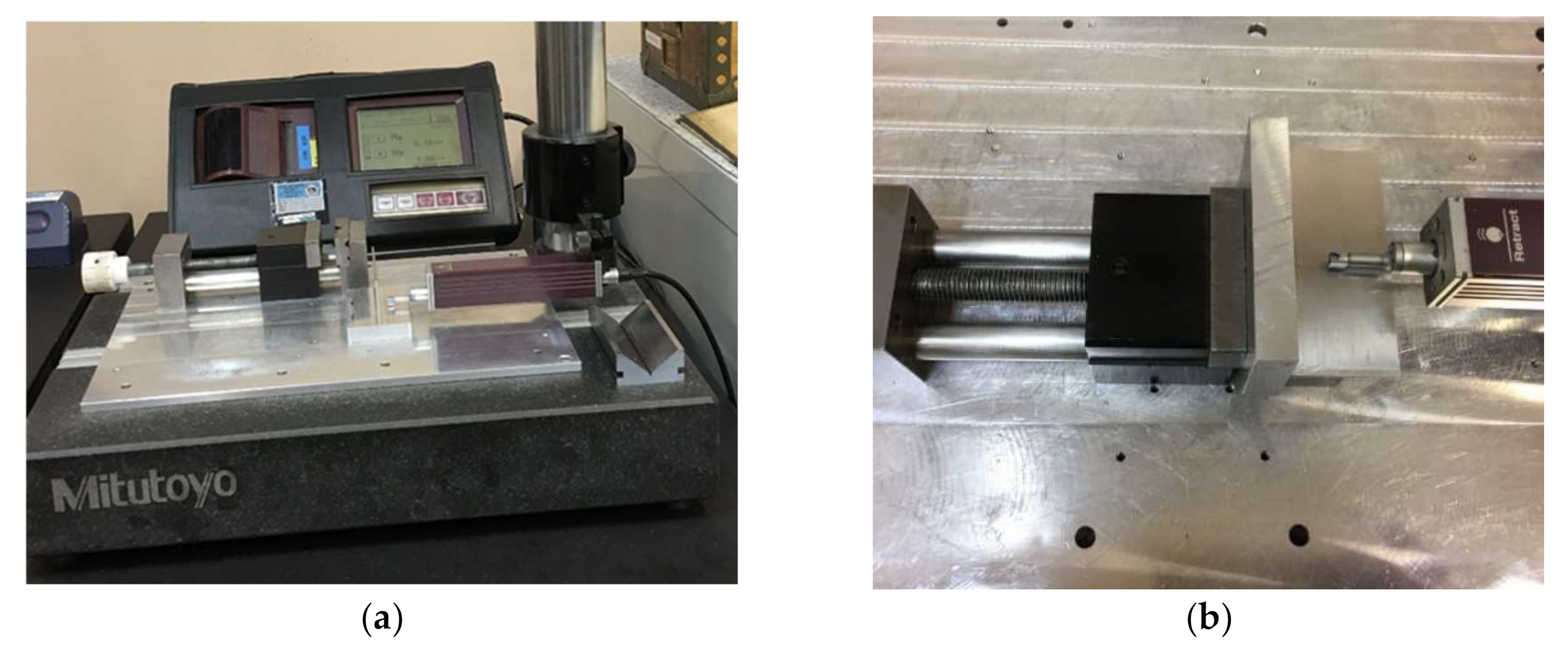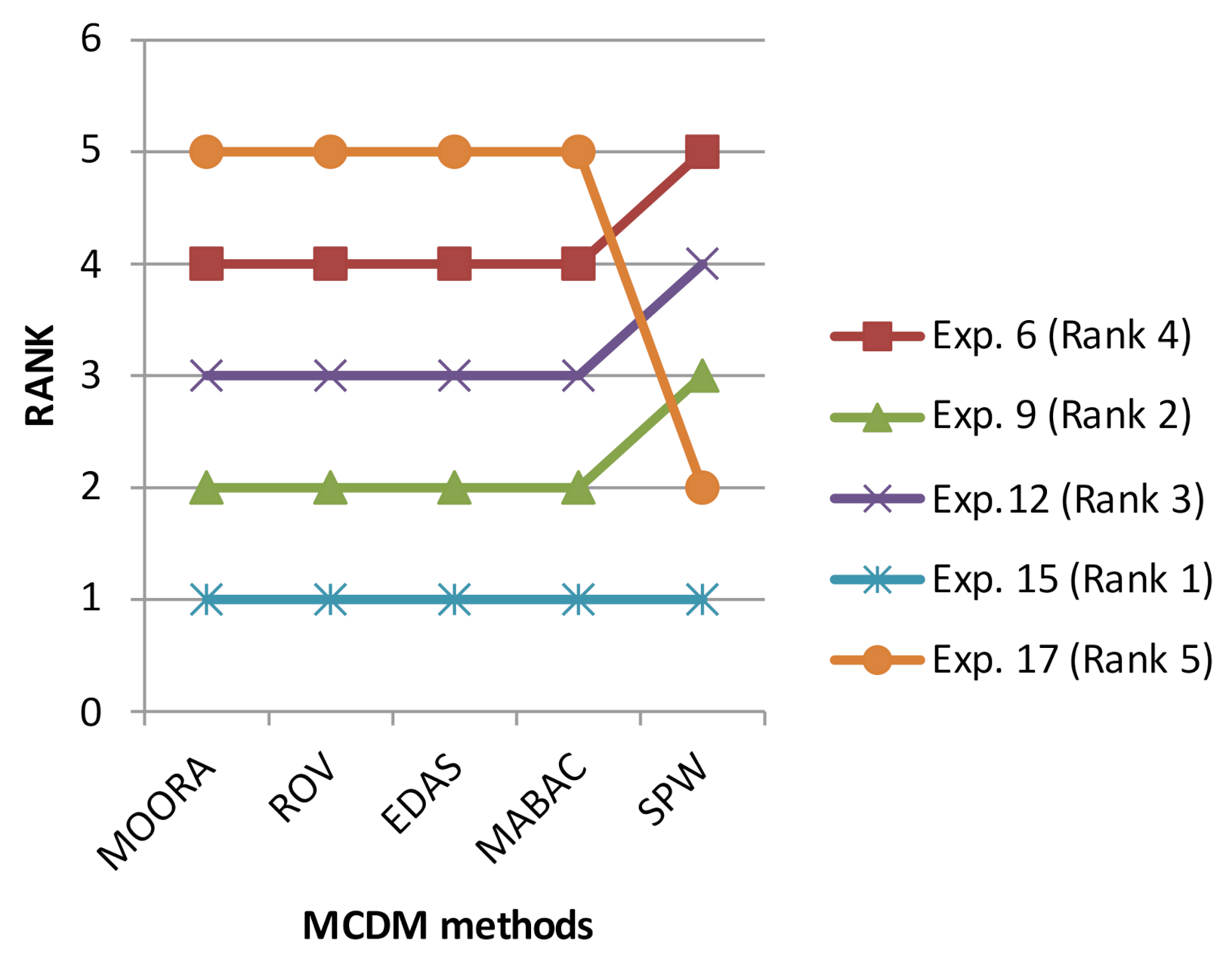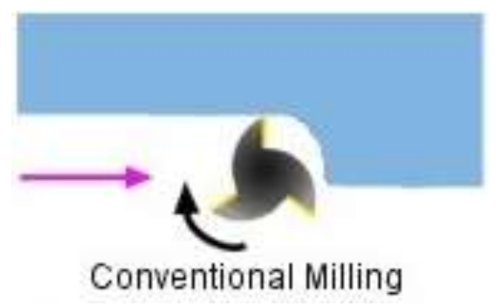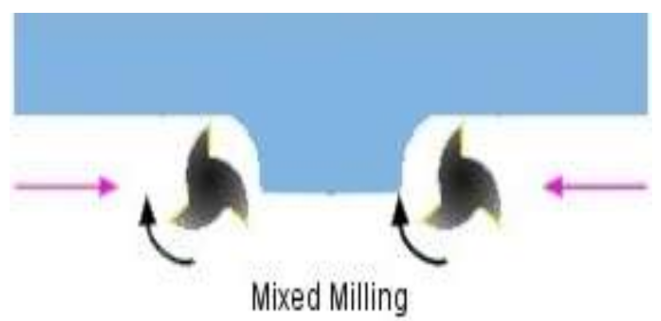1. Introduction
The modern market of specialized products requires materials with high mechanical properties, small mass, relatively low price, and good machinability, which is all contained in aluminum alloys [
1]. Thin-walled parts of aluminum alloys are very important structural components in the aerospace, automobile, and military industries, but they are often used in toolmaking and other electromechanical industry branches [
2,
3].
In parallel with the increase in market requirements for thin-walled components of aluminum alloys, numerous studies are being realized which are oriented towards:
Design optimization to reduce mass, deformations and vibrations, increase load capacity, and strength
Optimization of manufacturing process planning to increase productivity, cost-effectiveness, the dimensional accuracy, accuracy of forms and surface position, machining quality, etc., which is the main research subject in this paper.
Thin-walled parts of Al alloys can be obtained by casting, injection molding, material removal technologies, etc. Manufacturing of these parts is most often realized by milling, during which a large volume of material is removed, which can amount up to 95% of the initial mass of raw material [
4,
5]. Therefore, using appropriate high-speed machining parameters, it is necessary to achieve high productivity while also maintaining the required machining accuracy and quality. On the other hand, due to the low stiffness of thin-walls, it is also recommended to avoid the appearance of vibrations and deformations, which can cause machining errors, low quality, and the appearance of scrap [
6,
7,
8,
9]. The main causes for the appearance of these errors in the literature are the type of material, elements of machining system (machine, tool, fixtures), cutting parameters, machining strategies, metalworking fluids and coolants, wall thickness, and others [
2,
5,
10,
11,
12,
13,
14,
15]. By analyzing numerous research studies, influential machining parameters for thin-walled structures are systematized and represented in
Figure 1.
The main groups of machining parameters for thin-walled parts are the following:
Process planning parameters: Type and shape of a blank (casting, bar, sheet metal, etc.), Type and sequence of process operations (casting, cutting, heat treatment, etc.), Type and sequence of machining operations (face and plane milling, rough and soft milling, etc.)
Machining system parameters: Machine tool (stiffness, accuracy, available cutting parameters, etc.), Cutting tool (type, material, geometry, number of cutting edges, specific cutting edge angles, etc.), Fixtures (type, method, and place of positioning, clamping force, etc.), Metalworking fluids and coolants (type, concentration, purity, supply method, pressure)
Workpiece parameters: Type of material, Mechanical characteristics (hardness, strength, elasticity, toughness, etc.), Physicochemical characteristics (structure, chemical composition, density, thermal characteristics, corrosion resistance, etc.), Technological characteristics (machinability parameters), Geometric characteristics (shape: linear, triangular, rectangular, hexagonal and complex; wall-thickness to the wall-height ratio: small height-to-thickness ratio <15:1, moderate height-to-thickness ratio <30:1, very large height-to-thickness ratio ≥30:1; the accuracy of measures, the accuracy of forms and surface position; surface quality, etc.) and
Machining operation parameters: depth of cut, feed, cutting speed/number of revolutions, tool path strategies.
Authors in [
16,
17] investigated the influence of wall thickness, milling forces, and cutting tool position on the deformations of thin-walls and the appearance of geometric errors. The results from [
16] show that the machining parameters can be selected for each pass to achieve milling efficiency and accuracy, while the results from [
17] predict the definition of remnant material in order to reduce deformations and achieve high machining quality. Yan et al. [
18] proposed the machining strategy with maximal depth of cut from the considered range and with the respect to the threshold of the cutting force. Efficiency of the proposed methodology was tested on the basis of simulation and experiments and the obtained results showed the reduction in machining time and surface error.
The study in [
19] considers the influence of clamping fixtures, operation sequence, selected tool path strategy, and cutting parameters on plastic/elastic deformations during the machining process using FEM analysis and CAM software. The proposed model performs a computationally efficient transient thermo-mechanical coupled field milling simulation, predicts the workpiece non-linear behavior during machining due to its changing geometry, allows the modelling of the effects of initial residual stresses on part deformations and integrated analytical machining load - cutting force and shear plane temperature. A model of deformations of thin-walled structures in the milling process and prediction of machining errors are investigated in [
20,
21]. In [
20], a new model is proposed to predict surface form errors caused by milling force during the five-axis flank milling process. The results showed that the surface deformation error of thin-walled structures is affected together by the instantaneous milling force and the local stiffness of the workpiece. On the other hand, in the paper [
21] a three-dimensional finite element model was established for the milling of thin-walled parts, that predicts the elastic deformation law of the thin-walled blade.
Sapthagiri and Rao [
22] used the Taguchi method to experimentally examine the significance of machining parameters (cutting speed, feed, depth of cut, a width of cut, tool path layout) and the influence of coolants on the reduction in tool temperature, as influential parameters on the deformation during machining. The optimum parameters which influence distortion were identified. By checking the samples machining with different tools and different speeds the warpage of the components are very less. Authors in [
23] emphasized the influence of cutting parameters on the cutting forces and the surface roughness during face milling of aluminum alloy 7075 obtained by the new semi-solid metal casting process. Results show that the optimal combination for the cutting force is the choice of a minimum level for all tested parameters, while for the surface roughness the cutting depth at the median level is the most preferable for the observed range.
Sridhar and Babu [
24] investigated the influence of the material removal rate on the distortion of thin-walled parts of aluminum alloy by combining the following machining parameters: feed, cutting speed, depth of cut, and width of cut. They concluded that the increase of feed, depth of cut and width of cut lead to the increase of distortion of thin-walled structures. Also, the increase of material removal rate by increasing feed and speed instead of depth of cut and width of cut represents better solution for minimizing wall distortion. Qu et al. [
25] optimized the milling parameters for thin-walled parts from the point of view of cutting forces, surface roughness, and material removal rate. The results showed that the cutting force and surface roughness increased with increasing feed per tooth and milling depth. On the other hand, the increase of spindle speed affected the increase of cutting force as well as the decrease of surface roughness.
Bolar et al. [
26] researched the influence of feed rate, the number of flutes and machining strategies on surface finish, and deflection errors during machining of ultra-thin C shaped walls made of aluminum alloy. The authors concluded that a combined approach i.e., concave and convex machining with four fluted carbide end mill produced superior quality and precise thin-wall components. Shamsuddin et al. [
27] compared milling cutting path strategies on surface finish, thickness accuracy, and machining time for thin-walled aluminum alloys. MasterCam X MR2 software was used to obtain the best tool path strategy. Experimental results showed that true spiral is the best machining strategy in terms of thickness accuracy but lack of surface roughness when compared to other machining strategies. However, concerning surface roughness and machining time, the parallel spiral strategy was more promising when compared to other strategies. Popma [
28] developed a system for automated generative computer-aided process planning (CAPP) for thin-walled parts machined on high-speed CNC machines with a special emphasis on machining sequence and strategies for thin-walled parts while achieving accuracy and quality of machining.
Due to the low rigidity of the thin-walled structures, vibrations often occur during machining, which is divided into self-induced and forced vibrations [
5]. Self-induced vibrations or chatter occur when the frequency response is induced by the machining process, i.e., due to friction in the tool-workpiece system, thermo-mechanical processes, or as a consequence of a regenerative effect. Forced vibrations or amplification occur when the stiffness of the part is not sufficient to maintain a constant chip thickness. The cutting tool bounces off the workpiece, producing vibrations at the same frequency as the main spindle and its components.
Machining parameters significantly affect the efficiency of the machining process but also its stability. In order to provide these criteria stability lobes diagrams (SLD) are used. Stability lobes diagrams represent areas of stability, i.e., areas of machining parameters where vibrations will not occur [
29]. Authors in [
30] studied the effect of VSR (Vibratory Stress Relief) on the deformations and residual stresses of Al 7075 thin-walled parts. They concluded that VSR improved the shape and size of material stability to a significant level by relieving induced residual stresses in thin-walled parts. In addition to static and dynamic models, there are also analytical models related to the development of new methods for predicting the behavior of systems based on frequency response and deformations resulting from cutting forces [
31].
By analyzing the literature sources, it can be concluded that the field of machining of thin-walled parts has been the research subject of many researchers around the world for many years. Due to the specificity of the thin-walled part design, the machining parameters’ influence is much more pronounced compared to the “normal” thick-walled parts. Optimization theory as a scientific discipline has a huge application in solving various engineering problems, where the application of appropriate methods finds the best solution for the selected optimization object for certain conditions based on one or more optimization criteria. Machining parameters are most often input variables that are optimized within the machining processes. For optimal parameters, those values are taken that give the best solution of the objective function. The selection and optimization of machining parameters are mostly realized using experimental research with the application of appropriate single and multi-criteria optimization methods, simulation techniques, and their combination.
This paper’s main research subject is to determine the quality machining parameters in high-speed milling of linear thin-walled components made of aluminum alloy Al7075. To that end, using the standard Taguchi orthogonal sequence L27, the experimental plan is created and realized. Based on its results and by applying MCDM methods, selecting the optimum machining parameter levels is achieved. At the input of the experimental design, the following parameters are varied: wall thickness (a), number of revolutions (n), feed rate (f), depth of cut (δ), and tool path strategies (TPS), while the output parameters are the following ones: machining time (T)/material removal rate (MRR), wall thickness deviation (Δa), flatness deviation (Δb), parallelism deviation (Δc), perpendicularity deviation (Δd) and surface roughness (Ra). These output parameters represent the optimization criteria, which are assigned weight coefficients based on the design and technological requirements of thin-walled parts. The selection of the optimum machining parameter levels and their ranking is realized using 14 chosen MCDM methods: GRA (Grey Relational Analysis), AHP (Analytic Hierarchy Process), MOORA (Multi-Objective Optimization Method by Ratio Analysis), TOPSIS (Technique for Order Performance by Similarity to Ideal Solution), ROV (Range Of Value), COPRAS (COmplex PRoportional Assessment of alternatives), ARAS (Additive Ratio ASsessment), WASPAS (Weighted Aggregates Sum Product ASsessment), VIKOR (VIsekriterijumska optimizacija i KOmpromisno Resenje - in Serbian), OCRA (Operational Competitiveness Rating Analysis), EDAS (Evaluation based on Distance from Average Solution), MABAC (Multi-Attributive Border Approximation area Comparison), SAW (Simple Additive Weighting) and SPW (Simple Product Weighting). The obtained results are compared and methods that satisfy the pre-determined constraints of correlation coefficients are adopted using correlation analysis. Based on these results, the integrative and final solution of the optimal machining parameter levels is defined, and alternative solutions are ranked.
5. Conclusions
In this study, the machining parameters for milling of line-type thin-walled parts made of aluminum alloy Al 7075 were analyzed. The influence of wall thickness (a), number of revolutions (n), feed rate (f), depth of cut (δ), and tool path strategy (TPS) was examined on machining time (T)/material removal rate (MRR), wall thickness deviation (Δa), surface flatness deviation (Δb), surface parallelism deviation (Δc), surface perpendicularity deviation (Δd) and surface roughness (Ra), all of them representing the optimization criteria.
Considering the characteristics of the process of high-speed milling of thin-walled parts, a comparison of optimization criteria using the AHP method was made, where the highest weight coefficient was obtained by the material removal rate (MRR), as a productivity opponent WMRR = 0.43571, then weight coefficients of the wall thickness accuracy and surface roughness WΔa = 0.15913, WRa = 0.15913, and finally the accuracy of form and accuracy of surface position WΔb = 0.08201, WΔc = 0.08201 and WΔd = 0.08201. Twenty-seven experiments were conducted using the standard Taguchi orthogonal sequence L27, and multi-criteria optimization was performed using 14 MCDM methods (GRA, AHP, MOORA, TOPSIS, ROV, COPRAS, ARAS, WASPAS, VIKOR, OCRA, EDAS, MABAC, SAW and SPW) According to this, the optimal alternative levels of input parameters for the defined objective function and their ranking were obtained.
Afterward, the obtained results were compared using correlation analysis based on Spearman’s and Kendall’s rank correlation coefficients and the standard deviation of the ranks of the alternative levels. At the output, the integrative decision on selecting the optimal level of high-speed machining parameters based on 5 MCDM methods (MOORA, ROV, EDAS, MABAC and SPW) that met the limits of correlation coefficients was made. The optimum machining parameter level is experiment No.15 with the following varying input parameters a = 1 mm, n = 12,000 rpm, f = 2400 mm/min, δ = 2 mm, TPS 3 and the output machining parameters as the optimization criteria: MRR=14,980.790 mm3/min, Δa = 0.0260 mm, Δb = 0.03650 mm, Δc = 0.0905 mm, Δd = 0.1510 mm and Ra = 1.0050 μm.
